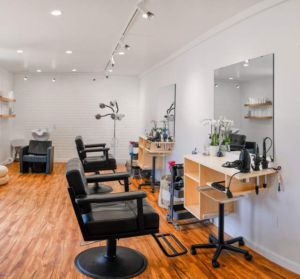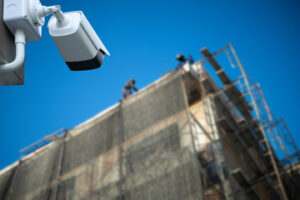Some people trek to every MLB stadium, and others camp at all the national parks, but there’s a whole new bucket list for those with wild hair needing transformation. Travel the country and let the top talent transform your tresses at these luxury salons.
Appointment-only salons allow clients to schedule services in advance. They may also provide various products to help you maintain your new look between visits. Contact Hairicc now!

Salon haircuts are a key part of a healthy hair care routine. They help maintain a sleek, stylish appearance and are an excellent way to update a look. They also provide a relaxing self-care experience and can boost confidence levels. Professional stylists can transform a client’s appearance and are skilled at creating unique styles that suit individual clients’ preferences.
Many clients prefer to get their hair cut at a salon because it is an opportunity to unwind in a serene environment away from daily stressors. They can also enjoy a soothing scalp massage and feel pampered during their visit. These experiences can have lasting positive effects on a client’s mental health. Additionally, a salon’s services can save clients time in the long run by eliminating the need to spend time styling their own hair at home.
The hygiene standards in a salon are rigorous and ensure that the hair care products used are safe for customers’ use. Stylists also have a high level of expertise when it comes to cutting techniques, which helps ensure that each client gets the best possible results.
In addition to offering quality hair cuts, salons often offer a variety of other treatments, such as color, keratin, and extensions. These services can be difficult or impossible to replicate at home. Additionally, salons can provide a wide range of shampoos and conditioners that are formulated with high-quality ingredients to maintain a healthy head of hair.
Salons can build loyalty with their clients by offering special discounts and rewards for repeat business. This can include complimentary products or services on their birthday, a discount for referring friends, or any other incentive that will keep customers coming back.
Hair Color
Hair color is big business at salons. Younger clients are emulating celebrity color chameleons with streaks and tips, baby boomers are covering their grays, and formerly color-shy clientele is now coming in for dimensional shades that perk up mousy or washed-out hair. Many salons also offer a full selection of color-preserving shampoos that can help keep clients’ tresses vibrant in between appointments.
Having the right color education and training is critical for any beauty professional working with this service. Understanding how to achieve desired results and correct color mishaps properly is paramount for customer satisfaction and loyalty.
To help stylists perfect their skills, many salons offer specialized classes for new and seasoned hair colorists. These classes can cover topics like color theory, how to create different effects with coloring techniques, and the benefits of using a specific line of hair dye.
As a result of this ongoing education, hair colorists have access to the latest techniques and products for their clients’ satisfaction. Choosing a hair color line that is easy to use and provides efficient application can significantly reduce the time required for a color service.
The best hair colors for clients will depend on their skin tone, so it’s a good idea to have an extensive selection. For example, someone with warm skin might look good in a bright blonde while others might be better off with a copper-red or auburn shade. Another important consideration is whether a client prefers a temporary or permanent dye. Generally, the permanent option offers longer-lasting color but comes with more damage to the hair. Temporary dyes, on the other hand, don’t require bleach and fade more naturally over time.
Hair Extensions
Hair extensions can add length and/or volume to your natural locks, transforming your look to give you a new sense of confidence. They are available in a variety of colors, lengths and textures and can be applied in a number of ways including tape-ins, glue-ins, braided in, woven in or more permanent methods like hot fusion or micro-links.
For Special Occasions
If you have a special event coming up, extensions can be the perfect solution for a stunning look. They’ll provide extra length to create a dramatic up-do or voluminous braids. And they’re also great for a quick color change or for adding volume to a full, flowing chignon.
Salons that specialize in extensions are trained to provide a seamless, natural looking result and to educate clients on how to maintain their new look at home. The right stylist will offer advice on how to style your hair and what products are best for maintaining the health of your extensions, especially with any heat styling tools.
If your hair is thick and coarse, or prone to tangling, it’s important that you stay away from hair extension methods that require a lot of glue and heat application. These can damage your natural hair and cause breakage. Also, if your hair is overly thin or brittle, it may be better to avoid all extensions except clip-ins. When you do have extensions, a soft-bristle brush is the best way to prevent matting and tangling while gently handling them. Sulfate-free shampoos and conditioners are also recommended to keep your extensions in pristine condition. This will ensure that your extensions last longer and give you a gorgeous, natural looking fuller head of hair.
Manicures
A manicure involves the grooming of a client’s nails, cuticles and fingers. It may include a nail massage and application of a clear or colored polish. Nail salons can also offer nail art, extensions and gel polish application. Some beauty salons offer pedicures, which are similar to manicures but focus on the feet and toes.
Hair stylists and nail technicians must be licensed in the state in which they work to perform these services, although licensing requirements vary by state. A cosmetologist license allows a person to cut, color, style and bleach hair as well as apply makeup. A barber’s license allows a person to shave and trim men’s hair. Some hair stylists and nail technicians have advanced training in specialized fields like balayage or coloring, while others are skilled at traditional techniques.
Salons that provide these types of services can be either salons that accept walk-ins or those that require appointments only. Salons that only take appointment clients may have a staff of salaried stylists who work set hours or booth renters who schedule their own clients based on the length of service they need.
A salon’s business plan should address overhead costs and regulatory requirements, including the need for a license to operate. It should also include a marketing strategy to build brand awareness among potential customers and a list of available salon services.
A salon’s decor can be designed to create a specific atmosphere and feel, whether it is trendy, luxurious or relaxing. Music, TVs and other amenities can enhance the ambiance. In addition, a salon should purchase furniture and supplies to outfit the space and stock its shelves with cosmetics and other salon products.
Pedicures
A pedicure is a treatment for the feet and toenails that includes a relaxing foot spa, nail trim, exfoliation, a scrub, nail polish application, and massage. While it may seem like a luxury, getting a pedicure can help improve nail health and overall well-being.
As a cosmetologist, you can use pedicures to educate your clients about proper body hygiene for their nails and feet. This is important because many diseases and disorders can be transferred from one person to another through poor nail care. This includes fungus infections, bunions, and ingrown toenails. A pedicure is also a good time to inspect your client’s feet and legs for skin conditions that could require medical attention.
A salon-quality pedicure includes an exfoliation that can remove dead skin cells and soften calluses. The massage included in a pedicure promotes blood flow, which can reduce pain and stiffness in the legs and feet.
When choosing a salon for your pedicure, make sure the facility follows infection control procedures. The tools used in a pedicure should be sterilized between each client using an autoclave or disinfectant. In addition, the foot bath should be re-used only after a thorough cleaning to prevent contamination.
Ask the technician about the cleanliness of her station before beginning the service. It is also a good idea to ask about the cleaning methods for the foot tubs and the disposable tools, including single-use files and buffers. It is essential to avoid any salon that does not follow strict infection control protocols since germs can cause warts and other serious foot problems. Moreover, it is recommended that you choose a salon that uses plastic liners in the foot bath to prevent cross-contamination between customers.
